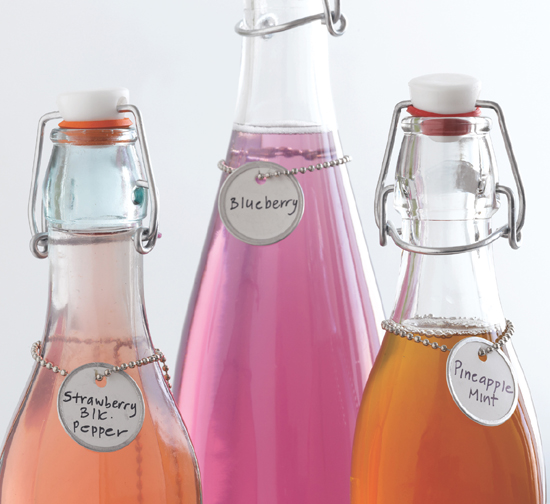
Call it punk domesticity, urban domestics, hipsters with Mason jars, or just a CAN-do attitude: a humongous tidal swell of interest in food preservation, home canning, foraging, nose-to-tail eating, and back-to-basics DIY kitchen wizardry has been growing in the past few years, and the movement has permanently shaped the way we think about store-bought and packaged foods of all sorts. Obsessive food eaters like you and me are demanding in earnest the same high-quality, artisanal standards from factory-prepared foods like cereals and sodas that we’ve sought out in our organic produce, hormone-free dairy, and grass-fed beef. In short, we’ve grown hungry as hell for real food, and we see no need to stomach mass market cookie-cutter food any longer.
Home cooks have burned our palates on too much overbulked food packed with guar gum, dyes, and stabilizers. We’ve grown weary of characterless crackers, condiments, cereals, and other same-same packaged food solutions that continue to dominate the interior aisles of the grocery store. Who wants uniform factory-fake food that always tastes the same and looks the same?
We’ve come to expect more from what we eat, and we’re happy to inject a little sweat equity in our food—donning an apron, picking up a wooden spoon, and forging our own path to good eating and kitchen fun.
Making your own food is awesome. And, in point of pride, crafting your own pantry staples outshines the assembling of a single meal any day. Make chicken and rice and you can eat tonight. Make catsup and miso and you can enjoy the fruits of your labor for months.
When I wrote Jam It, Pickle It, Cure It, my first book on DIY cooking projects, I spent a year in the kitchen tinkering and experimenting to find the best and shortest routes to the kinds of handmade cooking projects that felt, at least to me, overlooked—lard, mustard, and marshmallows among them. My goals were simple: make a wide swath of the best project-y eats, using the least amount of effort and specialty gear, in my own urban apartment kitchen. I loved this notion of putting my own stamp on larder staples. I enjoyed writing Jam It so much, but I felt limited by a short production time, and I always felt just a few recipes short of finishing the kitchen manual that I’d always longed to own.
Each recipe was like a stand-mixer-windstorm that blew open a dozen new pages of ideas for additional projects. Making frozen fruit pops made me want to try out alcohol-infused pops. Infusing oil naturally got me thinking about full-flavored vinegars. Making sausage steered my thoughts to the possibility of homemade hot dogs and, of course, to handcrafting the ever-present and necessary elongated bun. Was it possible to do all this at home adhering to these same principles? The only way to know for sure was to give it a go.
And once I started talking to other food-crafting enthusiasts in bookstores and online, I immediately started acquiring new material: family fixes and recipes and a grandmother’s archive of pantry staple ideas. One woman told me of her grandmother’s pickles fermented with a slice of rye bread floating on top. Another gave me her recipe for plum brandy, made with nothing but garden plums, sugar, and plenty of time. And I’d never had so many conversations about raising chickens in my backyard! I am thankful to everyone who shared with me all of those great kitchen ideas.
I’m also thankful to all of you kooky cooks and bloggers who gave Jam It a try, and I sincerely hope that it led to some brainstorming at your own kitchen counter—that you, too, realized that you can do it better than the faceless food factory. I’m also thankful to Ten Speed Press for continuing to take a gamble on the culinary trials, errors, and successes of one dedicated, hard-working, heavy-researching food geek.
Yes, you CAN can. And dry. And ferment. And bottle. And bake. AND SMOKE. This book will give you a few more ways to do it all to the best of your ability. Enjoy, happy crafting, and keep pushing your food lust to the limits of kitchen science and your own palate’s creative genius.
Karen Solomon
CanItBottleItSmokeIt.com